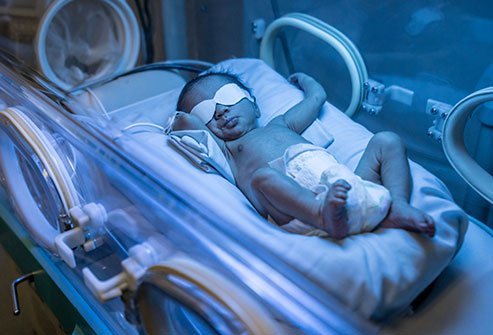
Some of the signs of ongoing liver damage may not evoke an emergency response and can be treated during a child’s visit to a pediatrician.
Some signs of liver damage can be alarming, especially in newborns and babies. If you suspect something is off with your damage, it is better to get them evaluated by a healthcare provider. Additionally, certain signs and symptoms could indicate an immediate danger that requires a trip to the emergency room.
Here are seven common signs of liver damage in babies.
7 common signs of liver damage
- Jaundice: The yellowing of eyes and skin is perhaps the most noticeable sign of liver failure.
- Constant vomiting: Constant vomiting and unable to keep the food down is often the sign of liver failure.
- Bone fractures: Children with liver disease are susceptible to bone fractures. Damage to the liver can cause reduced bone density or thickness of the bone. Although bone fracture needs immediate medical attention, you should consider visiting the liver doctor until the next office visit.
- Itchy skin: Itchy skin may occur due to the constant buildup of bile in the body.
- Loss of appetite: Liver disease can cause loss of appetite. It can result in the body getting inadequate nutrients, leading to malnutrition and other consequences.
- Pale stools: Some of the reasons why pale stools are a common sign of liver damage are:
- Bile is the pigment that normally colors the stool. Lack of bilirubin production due to liver disease can result in pale stools.
- Pale stools (acholic stools) are usually gray or clay-colored due to a lack of bile pigment.
- Tendency to bruise or bleed easily: Vitamin K is responsible for clotting any bruise and stopping bleeding. A lack of vitamin K can lead to easy bleeding and bruising. The liver is responsible for vitamin K production. Hence, liver damage can lead to a lack of vitamin K production or inefficient utilization of vitamin K.
The role of malnutrition in liver damage
Malnutrition may accompany the symptoms of liver disease. In case of liver damage, it cannot process the nutrients effectively leading to loss of appetite and further malnutrition.
Some of the consequences of malnutrition may include:
- Poor growth or weight loss: In liver disease, the liver fails to utilize the body fat efficiently, leading to poor growth and weight loss.
- Rickets: It occurs when the bone does not have enough mass or tissue, also called low bone density. Signs of rickets in infants and older children may include:
- Weakness
- Bowlegged
- Ribs that feel very bumpy where they meet the breastbone (sternum)
Some of the above signs of ongoing liver damage may not evoke an emergency response and can be treated during a child’s visit to a pediatrician.
When to call the physician or healthcare provider
It is better to visit the physician as soon as you suspect something is off.
Some signs can be alarming and should be informed to your child’s physician or healthcare provider at the earliest. These symptoms may include:
- Jaundice: Jaundice occurs because of bilirubin accumulation in the body. Bilirubin is a yellow pigment, which is a residue of a red blood cell breakdown. This residue is collected by the liver to be excreted along with the stools. Liver damage or issues with the bile duct can result in the accumulation of bilirubin inside the body.
- Signs of jaundice may include:
- Yellowing of the skin and whites of the eyes
- Dark urine
- Light-colored stool
- Signs of jaundice may include:
- Abdominal pain: It could indicate liver infection or inflammation.
- Fever: If your child experiences fever along with other symptoms of liver damage, call the healthcare provider at the first sign of fever. They might need additional information to confirm if the fever is due to liver problems or any other reasons.
- Swelling in the abdomen: Some of the reasons for abdominal swelling may include:
- Enlarged liver or spleen
- Fluid in the abdomen
- Infection or high pressure in the blood vessels supplying the liver

SLIDESHOW
Parenting Guide: Healthy Eating for Kids See Slideshow
When to go to the emergency room
Take your child to the emergency room or call 911 if they have any of the following:
- Changes in mental status: It occurs when the liver fails to process the toxins in it and may result in these signs that indicate the liver is not functioning properly:
- Vomiting blood: It indicates bleeding in the upper gastrointestinal tract.
- Bloody stool: It is a sign of bleeding in the gastrointestinal tract. Blood in the stool could be black and tarry, dark red, or bright red.
What are the diseases that cause liver damage in children?
Some of the liver diseases affecting children are:
- Acute liver failure: It occurs suddenly in children with no known history of liver disease.
- Alpha-1 antitrypsin deficiency: It is an inherited disease that occurs when the liver cannot produce enough of a protein named alpha-1 antitrypsin.
- Cirrhosis or chronic liver failure: It is a progressive liver disease where the cells in the liver are damaged, resulting in the formation of scar tissues.
- Liver cyst or tumor: Multiple benign or malignant tumors can form in a child’s liver.
- Biliary atresia: It is a rare disease of the liver that occurs in infants where the bile flow from the liver to the gall bladder gets blocked.
- Hepatitis: It occurs due to inflammation of the liver caused by the virus.
Latest Digestion News
Daily Health News
Trending on MedicineNet
9 causes of liver damage in children
- Viruses, such as hepatitis A and E virus, herpes (HSV), Epstein-Barr virus (EBV), and cytomegalovirus (CMV), can cause liver damage.
- Parasites, such as amoeba or malarial parasites.
- Inherited metabolic disorders, such as:
- Galactosemia
- Tyrosinemia
- Hereditary fructose intolerance
- Wilson disease (too much copper in parts of the body)
- Mitochondrial diseases
- Toxins, such as:
- Certain wild mushrooms
- Rat poison
- Insect killer
- Weed killer
- Some solvents or cleaners
- Low blood flow to the liver, such as in:
- Chronic hepatitis, such as hepatitis B and C, autoimmune hepatitis, nonalcoholic steatohepatitis (a severe form of fatty liver disease)
- Inherited conditions, such as:
- Heart problems lead to the reduced blood supply to the liver or the accumulation of blood in the liver
- Diseases of the bile ducts, such as:
- Biliary atresia (blocked or incompletely formed bile ducts in babies)
- Sclerosing cholangitis (chronic inflammation of the bile ducts)

QUESTION
Newborn babies don’t sleep very much. See Answer
Medically Reviewed on 6/29/2022
References
CHOC. Child Liver Disease and Disorders. https://www.choc.org/programs-services/gastroenterology/liver-disease-disorders/
Fairview Health. Know the Signs of Liver Problems in Your Child. https://www.fairview.org/patient-education/88687
Cincinnati Children’s Hospital. Biliary Atresia. https://www.cincinnatichildrens.org/health/b/biliary
Johns Hopkins Medicine. Liver Conditions in Children. https://www.hopkinsmedicine.org/health/conditions-and-diseases/liver-conditions-in-children